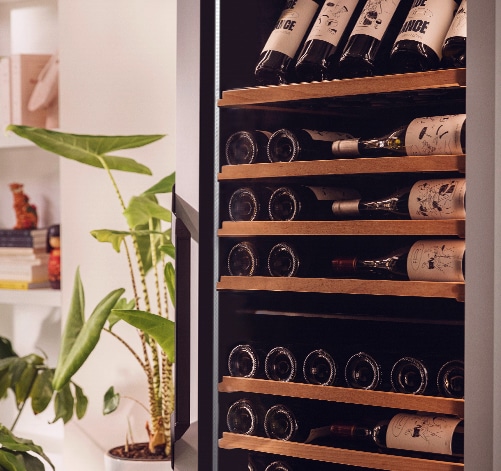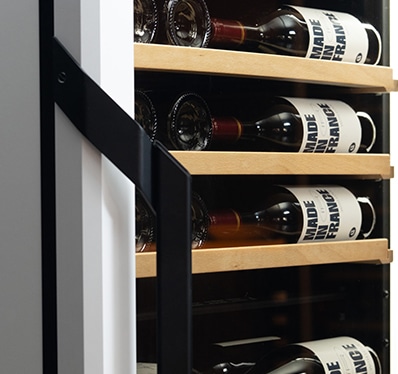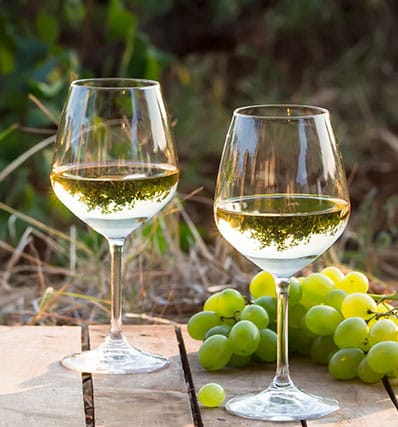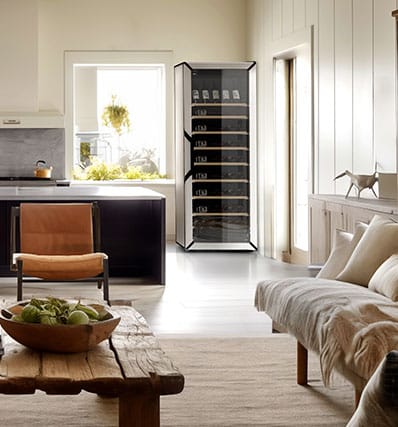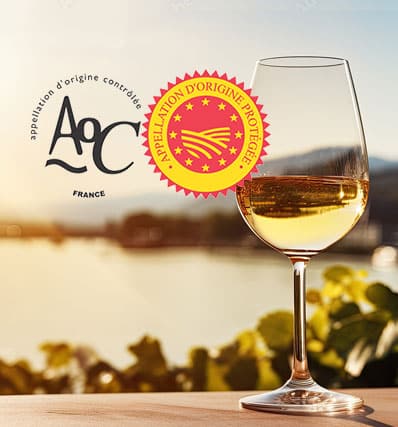
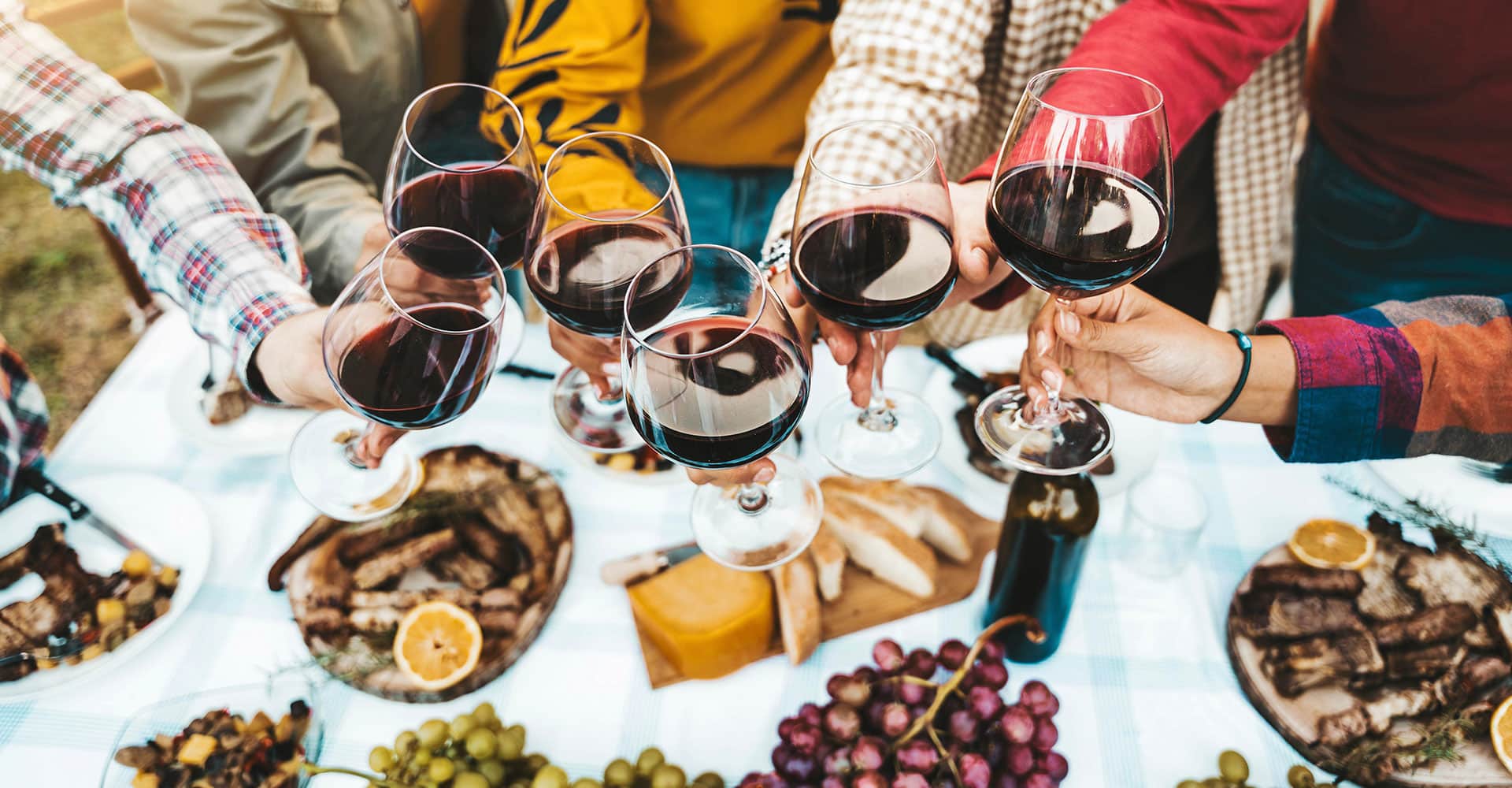
How to choose your wine?

Choosing the right wine is key to a successful wine tasting experience. Are you still lacking in knowledge and afraid of making mistakes? To avoid any unpleasant surprises, Goguette has some tips in store for you. And we promise, this will stay strictly between us!
1. Don’t (always) go by the price
Contrary to popular belief, the most expensive wines are not necessarily the best ones. When it comes to buying a good bottle of wine, there is no need to break the bank – especially if you are on a tight budget! Although the price is generally proportional to the quality of the wine, it is still possible to find excellent wines at very reasonable prices.
This is particularly true of the Vin de France wines, intended for quick consumption, or wines from small-scale producers. The Vin de France label replaced the outdated Vin de Table category in 2010, but remains the most basic quality tier for French wine. Vin de France wines can be made from grapes grown anywhere in France, but their labels do not mention a specific region of origin.

2. Distinguishing between wines for aging from those for medium-term consumption
A bottle consumed too early or, on the contrary, too late, can be disappointing on opening. On the market, some wines need to be kept for several years before reaching their peak: these are wines for laying down. They are traditionally distinguished by their balance and tannic structure. Over time, they will age and their bouquet will develop.
For instance, Médoc, Pomerol and Saint-Émilion are French Bordeaux wines that can be kept for up to 15 years or even longer. If you plan to consume a aging wine in the coming months, be sure to choose a bottle that is on the point of reaching its full maturity.
However, not all wines need to age. Many cuvées are suitable for shorter-term consumption, and can be enjoyed immediately after purchase, or in the months or years to come.
These include light, easily digestible, fruity wines such as Chardonnays or Pinots Noirs, both hailing from the Burgundy region of France, or Pinots Blancs, famous in their home region of Alsace.

3. Pay attention to vintages based on the region
The vintage is an important indication of the year in which the grapes were harvested. However, with the vagaries of the weather (heat waves, frost, hail, etc.), the bouquet of a wine from the same estate can differ from one year to the next. As a result, some vintages are excellent for all types of wine, while others are good only in certain regions. To find the right year for a wine based on its region, there are a host of vintage guides available online.
For example, 2019, 2020, 2021 and 2022 are among the most sought-after vintages for Bordeaux and Burgundy white wines.

4. Thinking about food and wine pairing
During a meal, a well-chosen wine can enhance not only the flavor of a dish, but also the beverage itself: this is what we call food and wine pairing. Here are the basic principles behind the idea:
-
For red meat, game, stewed dishes and strong cheeses, opt for a full-bodied French red wine such as a Bordeaux or Côte du Rhône, a Sicilian Nero d’Avola, or a Californian Shiraz.
-
For white meat, fish, shellfish, mild cheeses or desserts, choose a dry white wine such as a French Chardonnay, Sauvignon Blanc or Riesling. A light red wine such as an Italian Dolcetto d’Alba or a Cabernet Sauvignon from the Napa or Sonoma valleys are also good alternatives.
-
For salads, aperitifs, starters and certain fish dishes, choose a light rosé wine. A rosé from Provence, in France’s sunny south, would be perfect.
These rules are only guidelines. For example, some light red wines go perfectly with fish. Be experimental and try new combinations to find the one that appeals to you most!

5. Ask the right people for advice
Invited to a dinner party? To choose a good wine, be sure to visit a wine merchant near you. As specialists they will be only too happy to advise you and suggest an excellent bottle to suit your taste preferences, mood, or planned menu.
Another benefit is that they can take you off the beaten track, allowing you to discover new varieties other than the big names. As connoisseurs, they’ll also be able to suggest little-known gems, as well as pointing you towards smaller wine labels.
Last but not least, friends and family with a passion for wines and spirits will also be able to offer you invaluable advice and recommend treasures that will delight your taste buds. Do not hesitate to ask around – the pleasure of wine also lies in sharing one’s favorites!
The world of wine is as rich as it is fascinating! While these basic rules will help you make the right choice, the key is to remain inquisitive and not let yourself be intimidated. Guides, forums, blogs and specialized magazines such as WineFolly, Wine Spectator and Decanter.
Wine fairs are also a wonderful opportunity to meet producers and make great discoveries, often at very affordable prices. And over time, your confidence in choosing the right wine to accompany your meals will go from strength to strength. We wish you many a happy find!
To go even further
Discover our various wine fridge and the accessories that will enhance your bottles.
